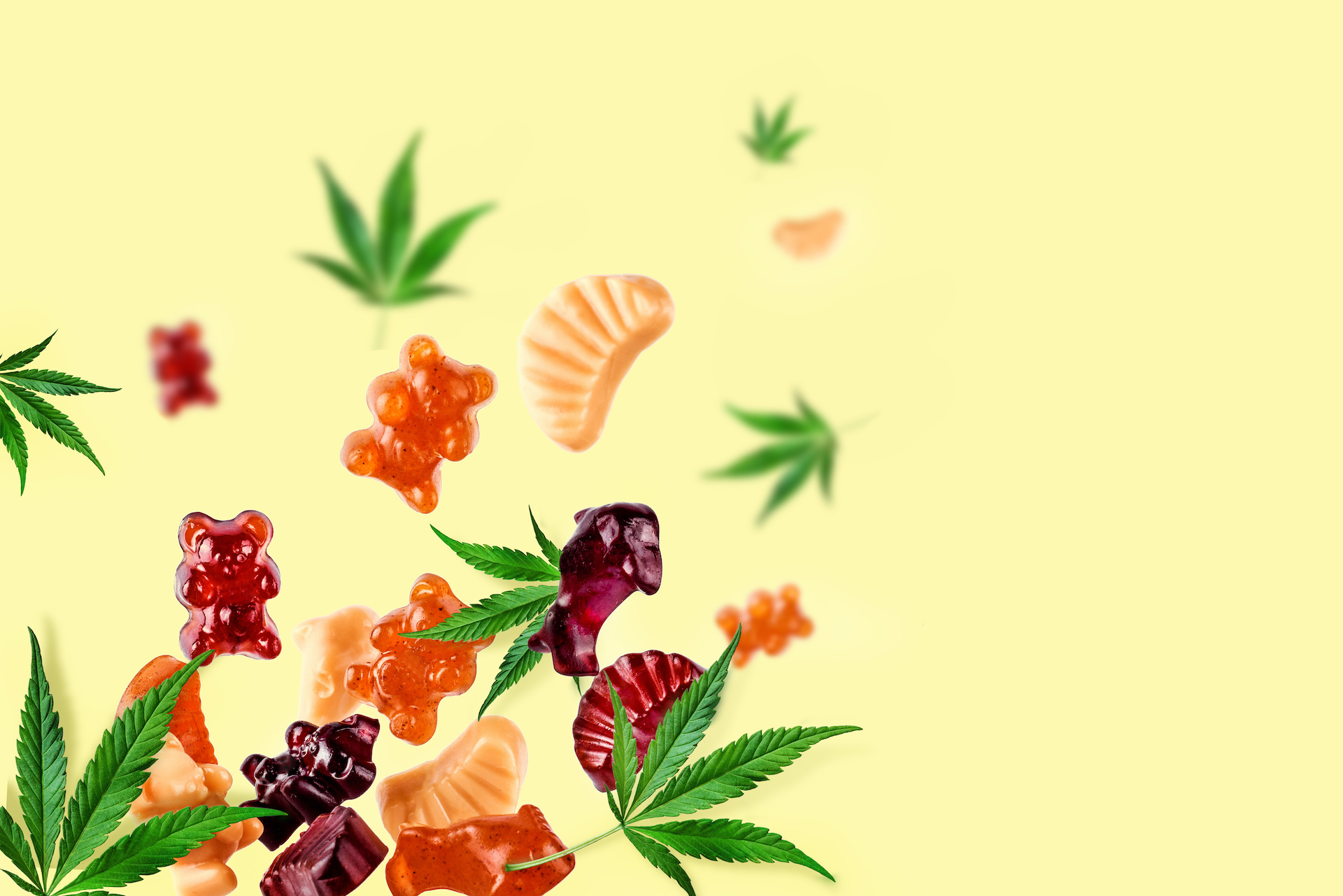Halloween is a time of hyperbole, for leaning into the ghoulish and ghastly. As temperatures drop and days shorten, maybe we become a bit more receptive to scary headlines and assuming the worst. And despite decades of activism, with over 25 years of legal access, cannabis still gets painted as the boogeyman.
Earlier this month, a story out of St. Charles, Missouri, warned of delta-8 candy found in a child’s Halloween candy bag from a local event hosted at a restaurant. A similar account has recently come from police in northern Nevada, posted to the most fear-mongering social media platform, Facebook.
But even our most liberal-minded communities fall victim to rumors. When Halloween season rolled around when Kiva Confections co-founder Kristi Palmer was growing up in the Bay Area, she’d hear the same frightened whispers from her parents and family friends: Look out, there could be drugs or razor blades in your candy!
“It was alive and well where I grew up—the myth that your parents had to go through your candy and make sure that it was safe for you to eat. It sounds so ridiculous when you say it out loud,” she tells Leafly, especially when those in the regulated market know that “you don’t need to trick somebody into consuming a cannabis product. As a brand that wants to have longevity in the cannabis industry, that’s a great way to get yourself in trouble on so many different fronts.”
Years later, these kinds of warnings still make their rounds once the holidays begin. Social media rumors, police press releases, and local media have created an annual cycle of Halloween hysteria that paints a simple walk around the neighborhood asking for Twix bars and candy corn into a battlefield where children can fall victim to tainted treats. Tricks indeed.
But year after year, kids get home with nary an edible or hypodermic needle in sight, and headlines die out once editors realize there was nothing to worry about in the first place.
So why does the anxiety persist? The answer is a little thorny, according to experts Leafly spoke to.
A brief history of Halloween sadism

Halloween as a holiday has deep roots in pre-Christian Celtic traditions, namely the festival of Samhain that celebrated the chiaroscuro of transitioning into the “dark half” of the year. But it didn’t emerge as the American “Halloween” until the 20th century, and trick-or-treating was hardly a national pastime until around the Second World War.
Joel Best, a sociologist at the University of Delaware, has been studying this phenomenon for nearly 40 years—he refers to it as “Halloween Sadism.” His data involves regularly combing local media for stories and verified cases of harm or even death linked to tainted candy, not just pertaining to cannabis but also heroin, razor blades, and cyanide. He updates it through the University of Delaware library annually.
“Halloween sadism is the belief that there are people that tamper with Halloween treats. I’m not real big on horror, but I think that Halloween is supposed to be scary. Most of us have stopped believing in ghosts, so we believe in criminals.”
Joel Best, professor at University of Delaware and Halloween Sadism researcher
He says these narratives have largely emerged in tandem with the War on Drugs. Having grown up in the 1950s, Best says these worries escalated with the national agenda against controlled substances. A story in the New York Times from 1970 seems to be the kickoff, and precedes Nixon’s infamous 1971 press conference that made drugs “public enemy number one.” His data reaches as far back as 1958. He tells Leafly he averages 0 to 3 paranoia stories a year.
But even these stories, when scrutinized, don’t hold up. They are self-reported or later found out to be hoaxes or misattributed blame. Ronald Clark O’Bryan, also referred to as “The Candy Man” and “The Man Who Killed Halloween,” poisoned his son in 1974 with cyanide-laced Pixy Stix to acquire insurance money. He initially claimed at the time it was collected while trick-or-treating.
On an episode of The Roll-up podcast last year, Leafly discussed a small handful of human monsters who have used candy to do harm, averaging one a decade. None of them used cannabis.
Best has also noted that rumors of tainted Halloween candy tend to spike with a big new event in the weeks leading up to the spooky holiday. The 1982 Tylenol recall, for example, was issued on October 5. Decades later, anxiety related to 9/11 fanned the fear flames.
The same applies to cannabis in recent years. Best notes a trend linked to when recreational cannabis sales began in Colorado and Washington. Similar scrutiny emerged in 2019 with the EVALI tainted illicit vape cartridge outbreak.
“If there is a big crime story in September, there are stories. In 2014, the first year there were dispensaries in Colorado, the Denver police put out a Youtube video about THC gummy bears. Someone followed up about reports, and there weren’t any. In 2019, there were stories that people died from black market vaping canisters. The Pennsylvania police found some commercial THC candy products when it wasn’t legal in PA…there was a lot of talk of linking these deaths and THC candy at Halloween.”
But these reports are not rooted in facts and evidence, says Best.
How to help dispel the myth
Despite a mounting body of evidence, these narratives regurgitate annually. Though the tide appears to be changing. Best has noted that many publications now publish pieces deconstructing the myth, as we are doing now, rather than legitimizing it. Cannabis legislation and educational outreach have helped assuage fears as well, and that new threats, like opioids, have overtaken weed.
“The worry about THC candy is so 2019,” he says with a laugh. “While he hasn’t yet updated his Halloween sadism document with 2022 findings, he points to fentanyl, particularly the “rainbow fentanyl” craze as the new big bad. But even to that, many proverbially roll their eyes. “It isn’t like every year there is a special threat. It blows over because there’s never anything to report.”
And lest we forget, we live in a country in love with capitalism and the lure of profit. Making edibles, even illicit ones, requires a lot of starting material and thousands of dollars worth of equipment to make work. Edibles at dispensaries typically go for $20–$30; Delta-8-infused edibles have comparable prices. The risk involved, let alone the fact that kids don’t carry cash, makes targeting children with unregulated wares a ridiculous business decision.
For Palmer, she believes killing the conspiracy starts in your own home; she’s heard from fellow parents in the legal cannabis industry that they struggle with broaching the subject to their kids. She has two young children of her own and has begun talking to her toddler daughter about what cannabis is and how to avoid it.
The key is to avoid falling into a good-bad dichotomy where cannabis has to be scary in order for kids to avoid it. And she’s a huge advocate for safe storage; your kid is far more likely to find your stash than a stranger or dealer. Just as you lock up the alcohol cabinet, keep your edibles in their child-resistant containers and keep them out of reach.
“I’ve tried to convey to [my daughter] less about what [cannabis] is and more about how to identify it. Because I think she’s so small, she’s not really going to understand what the effect would be like—that conversation comes later. It’s really important when you’re talking to kids, really of all ages. I try to give her the facts and what I know to be true without any interpretation. I’m not creating a story or putting judgment on cannabis. I’m not naive to the fact that she’s going to experiment with cannabis, probably before she’s 21.”
Best, unfortunately, doesn’t see the trend fading anytime soon, especially when even elected officials continue to perpetuate myths. But soon after Halloween come the midterm elections, and cannabis is all over them. We assume, Leafly nation, that this story isn’t new to you, and you’ve dismissed it. Once the candy bars have been gobbled up, however, it’s time to put your ballot where your mouth is.
Read the full article here









